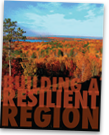(flip book powered by aXmag)
The Plan
Creating a Resilient Region:
The Central Minnesota Sustainable Development Plan
Our Plan This plan was presented to the community at our celebration event August 14, 2012. (Read more here: Celebrate the Completion of the Plan) It included the Livability Principles, Regional Guiding Principles, Vision and Values, and Issues, Goals, Recommendations, and Action Steps organized across 11 themes.
Annotated Index of Support Resources This online index provides a quick link to the support resources identified in the soon to be released Building a Resilient Region: Final Report for the HUD/DOT/EPA Sustainable Communities Planning Grant and an inventory of all the resources included on the Resilient Region website.
Table of Themes Cross Referenced with Principles & Source This document provides a comprehensive view of the final plan. It includes the issues, goals, recommendations and action steps cross-referenced with the HUD/DOT/EPA Livability Principles (HUD 1- 6), the Regional Guiding Principles (RGP 1-8), Activities 1-26, Comprehensive Economic Development Strategies (CEDS), and workgroups H = Housing; T = Transportation; E = Economic Development; and L = Land Use (Final Report Reference: Appendix B).
Model Comp Plan is the culmination of a year-long project by students of the University of Minnesota Law School's Environmental Sustainability Clinic, Land Use Planning section. The goal of the project was to develop model comprehensive plan language and accompanying model ordinances to help communities in Minnesota implement the Partnership for Sustainable Communities' Livability principles.
Policy Toolkit The "Supporting a Resilient Region: A Best Practices Toolkit for the Central Minnesota Sustainable Development Plan" is a capstone project from a team of Hubert H. Humphrey School of Public Affairs Maser of Urban and Regional Planning students working collaboratively with Regional Sustainable Development Partnerships (RSDP).
Building a Resilient Region: Our Story 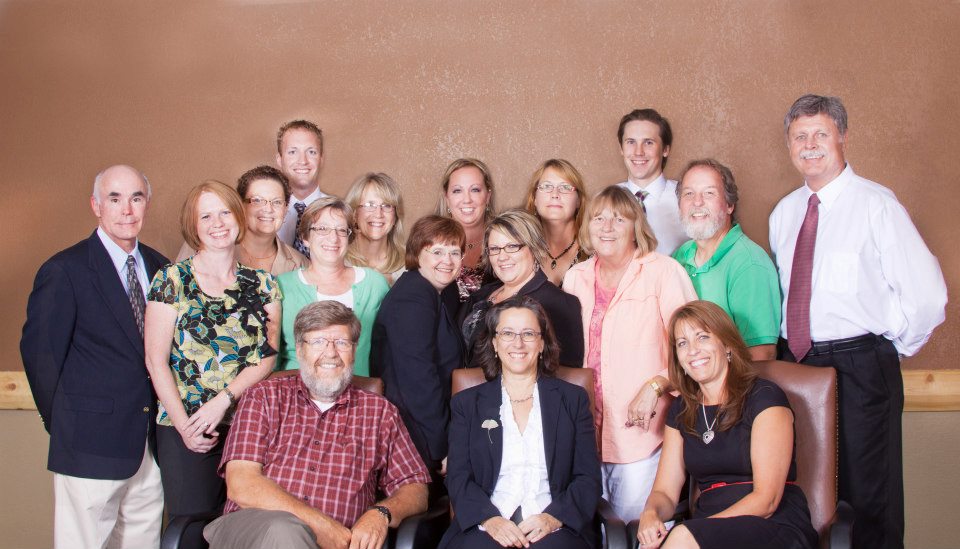
Who are we?
We are a Community-Driven, University-Assisted, Partnership who leveraged a $1.8 Million Dollars ($800,000 HUD/DOT/EPA Sustainable Planning grant and a $800,000 in-kind local match) to develop a five-county strategic plan and an additional $5 Million to support implementation through highly involved civic engagement.
The Region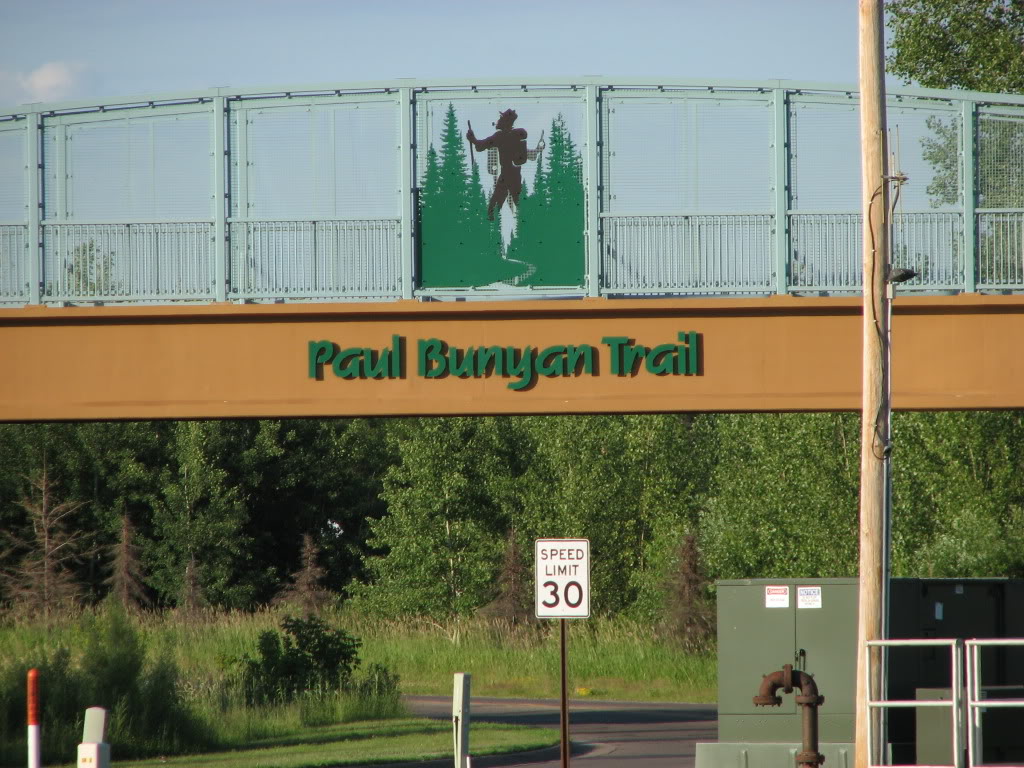
Our region is a rural and small town area with a population of 162,000 in 69,194 households spread over an area of 3,996,051 acres. Our five-county area is blessed with an abundance of business, industry, cultural and natural resources. Tourism is one of the major economic engines of the region and our region is referred to as the Central Lakes Region due to the abundance of lakes.
Our Assets
Ecologically, our region is unique in that three distinct environments or biomes meet. The western plans and prairies, the northern coniferous forest and eastern hardwood forest all intersect in central Minnesota. This area and the Brainerd Lakes are the heart of “The Land of 10,000 Lakes” for which Minnesota is known. The ethnic makeup of Region five is largely representative of the first Germanic and Scandinavian settlers, who came to the region to harvest timber, work the land and mine iron ore. A sizable Ojibwa (Native American) population resides in the region. There is an increasing Latino population today in Todd County. Former military service people make up a disproportionately large percent of the population.
| Our Lakes | Our Cities & Towns | Our Farms | Our Trails |
|---|---|---|---|
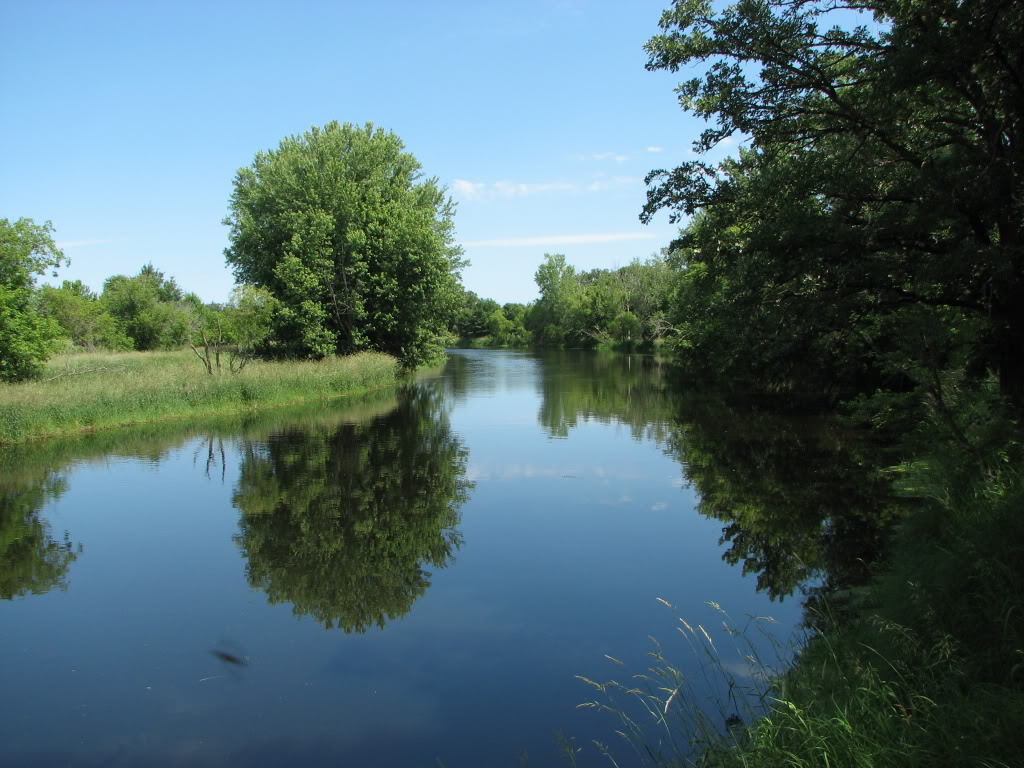 |
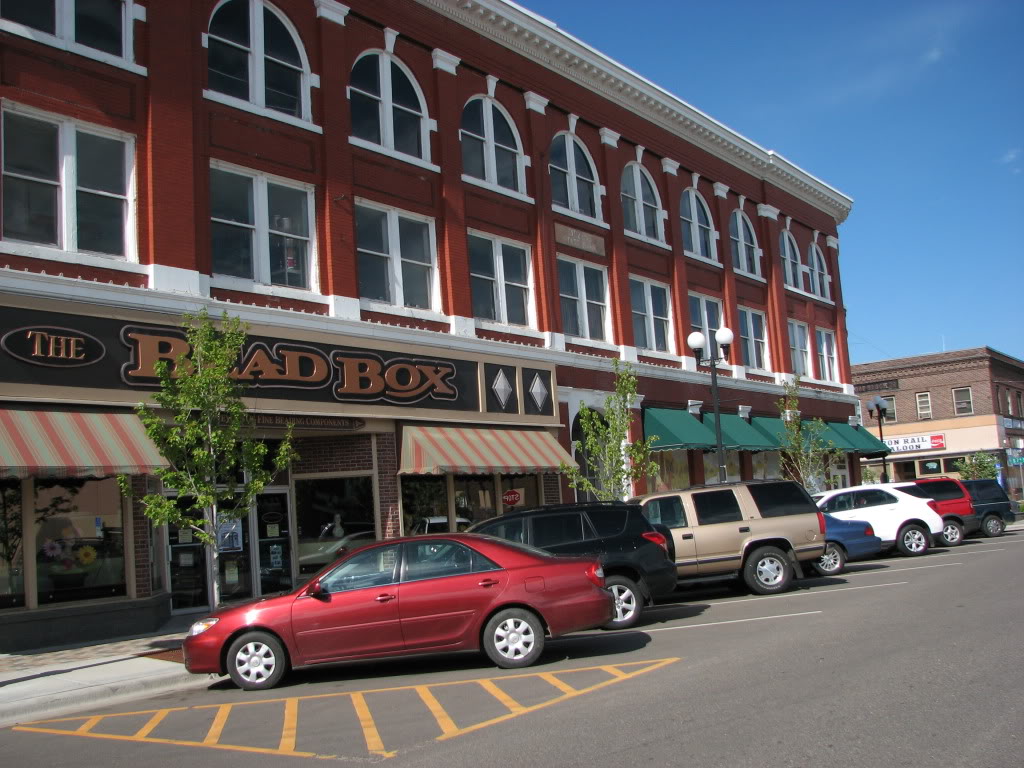 |
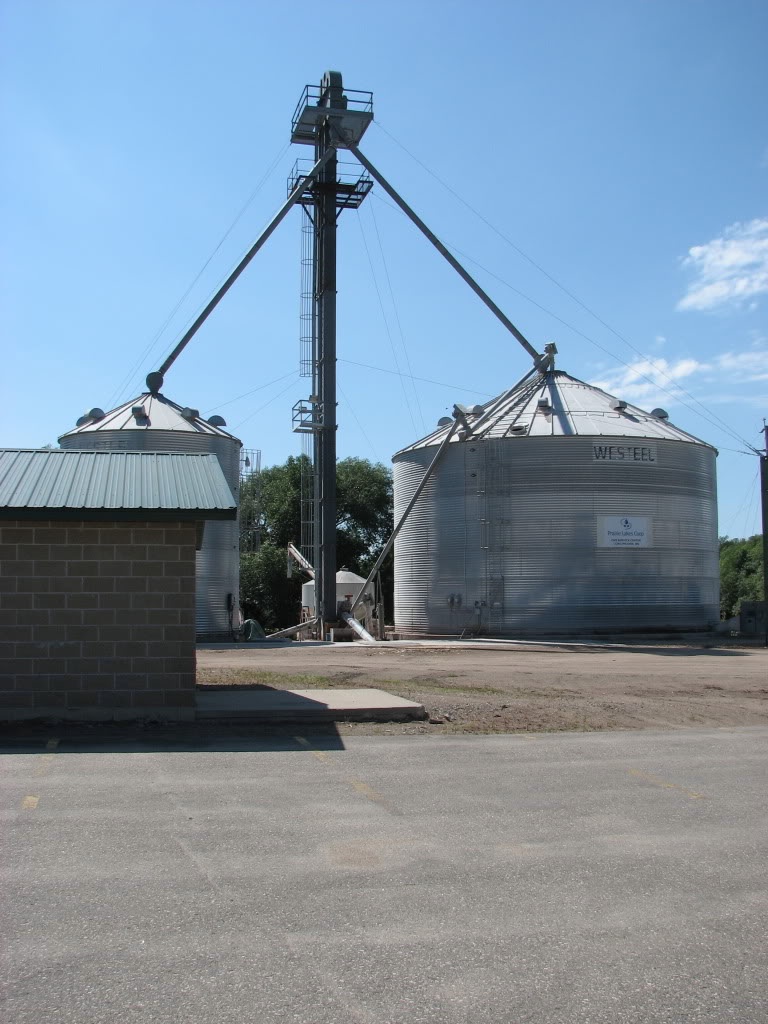 |
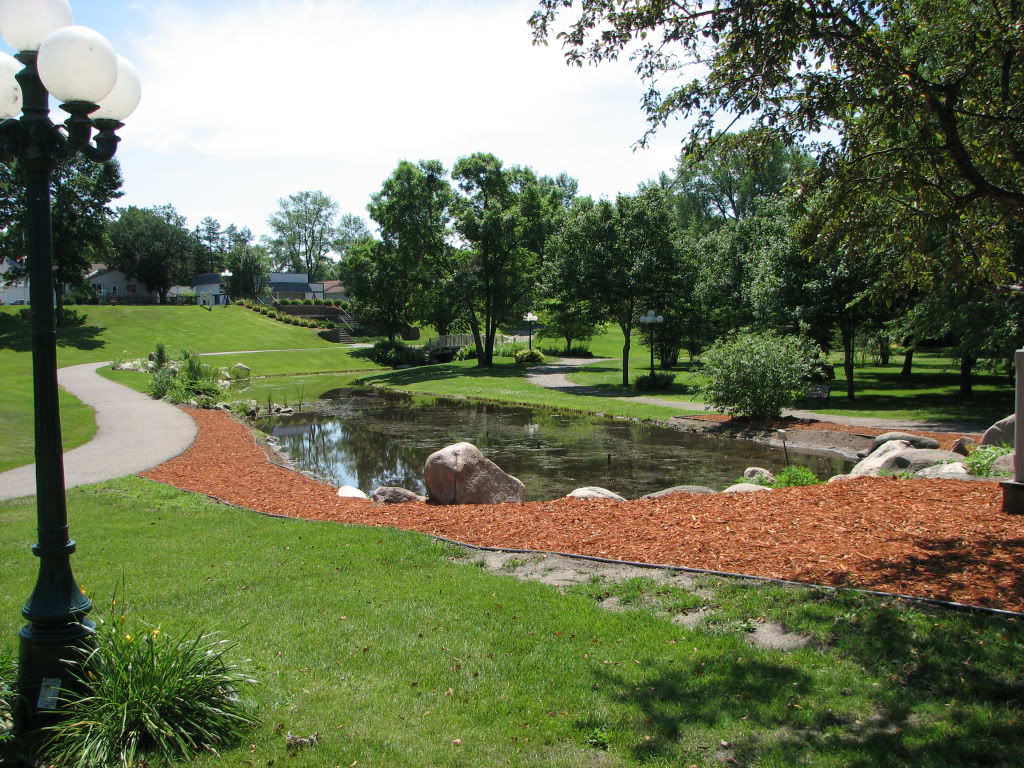 |
The Need for a Sustainable Development Plan
Individuals and our communities faced an uncertain future in light of the economic downturns (called the “Great Ression” by the Minnesota State Economist Tom Stinson). Region 5 is the only region in the State of Minnesota where all 5 counties are classified as economically distressed. At the time of the HUD/DOT/EPA NOFA the region was experiencing many issues as documented in the Regional Profile compiled by Nate Dorr, Analyst for the Minnesota Department of Employment and Economic Development, including, failing businesses, population growth and out-migration, family farms disappearing, pressure on natural resources, and high unemployment. Although there were committed organizations working towards sustainability in our region, the absence of a clear and coordinated regional plan made process less than effective. The project was designed to break down the “silos” and create a Regional Sustainability Pan through consensus and an inclusive participatory process.
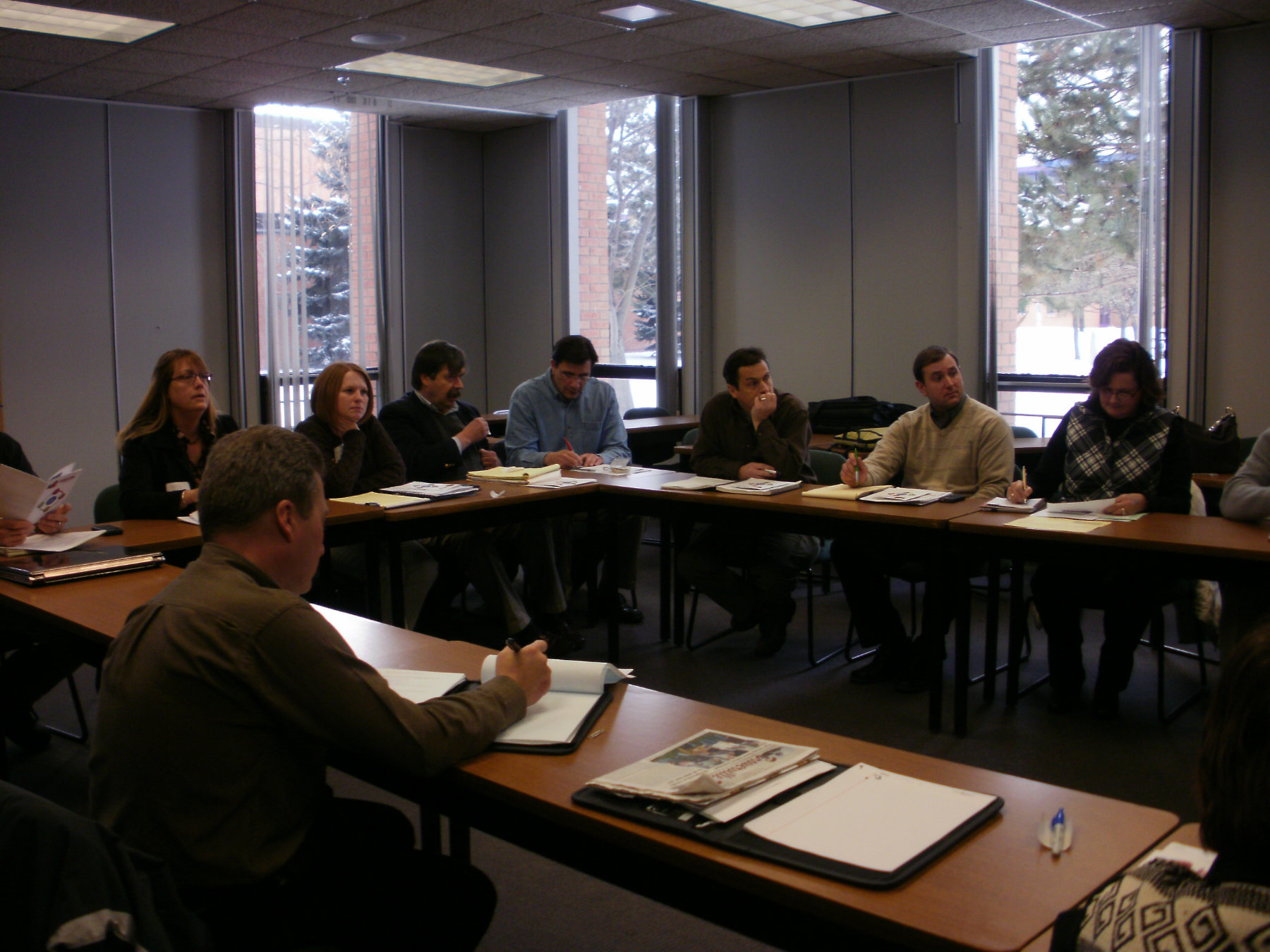
Videos and posters from the Duluth Superior Area Community Foundation’s project Speak Your Peace! were used to help establish the norm for positive dialogue.
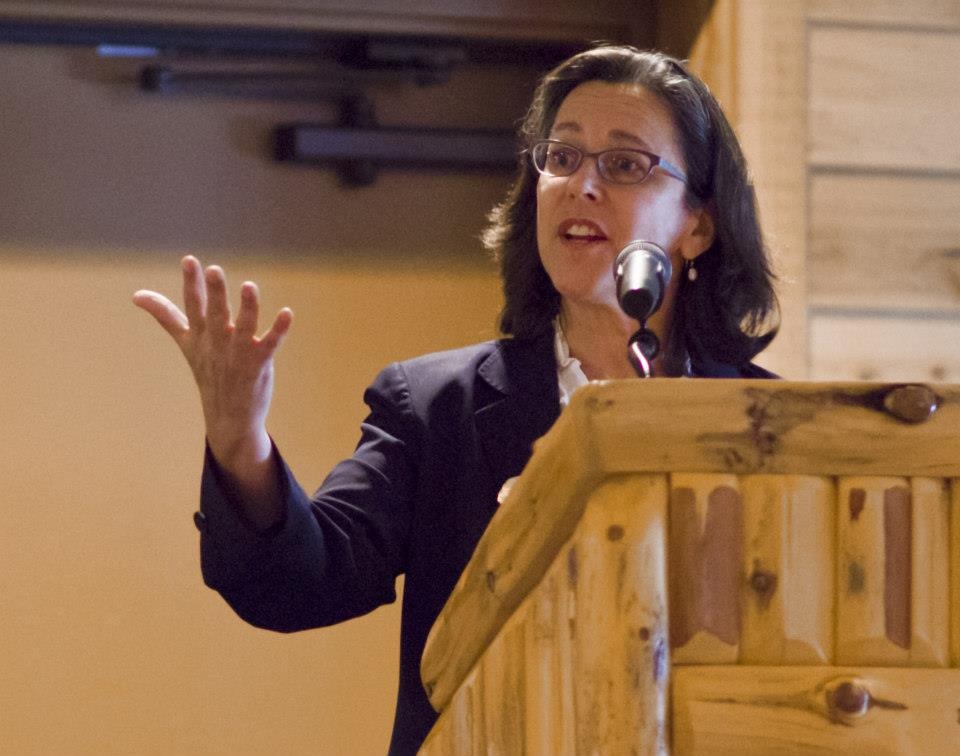 Keys To Our Success - Grant Writing and Start-up Phases. We learned that an important key to our success was the grant-writing phase. Not only did it produce a winning grant proposal, but it also set the stage for rapid movement from start-up through completion. We completed the plan in the 20 months specified. According to Shelly Poticha, Director, Office of Sustainable Housing and Communities, "your project is far ahead of the others - you completed your planning process a year prior to all remaining 2010 grantees." A few critical steps taken during the grant-writing phase, which, upon reflection, were crucial to our success were are included in our final report. These included issuing an invitation across the five-county region to first decide if the region was ready to pursue a planning grant and was willing to commit the time to implementation. We also hit the ground running, once the grant award was announced - making sure the Region Five Development Commission and local units of government were reminded of the application and what was to be accomplished. R5DC Presentation.
Keys To Our Success - Grant Writing and Start-up Phases. We learned that an important key to our success was the grant-writing phase. Not only did it produce a winning grant proposal, but it also set the stage for rapid movement from start-up through completion. We completed the plan in the 20 months specified. According to Shelly Poticha, Director, Office of Sustainable Housing and Communities, "your project is far ahead of the others - you completed your planning process a year prior to all remaining 2010 grantees." A few critical steps taken during the grant-writing phase, which, upon reflection, were crucial to our success were are included in our final report. These included issuing an invitation across the five-county region to first decide if the region was ready to pursue a planning grant and was willing to commit the time to implementation. We also hit the ground running, once the grant award was announced - making sure the Region Five Development Commission and local units of government were reminded of the application and what was to be accomplished. R5DC Presentation.
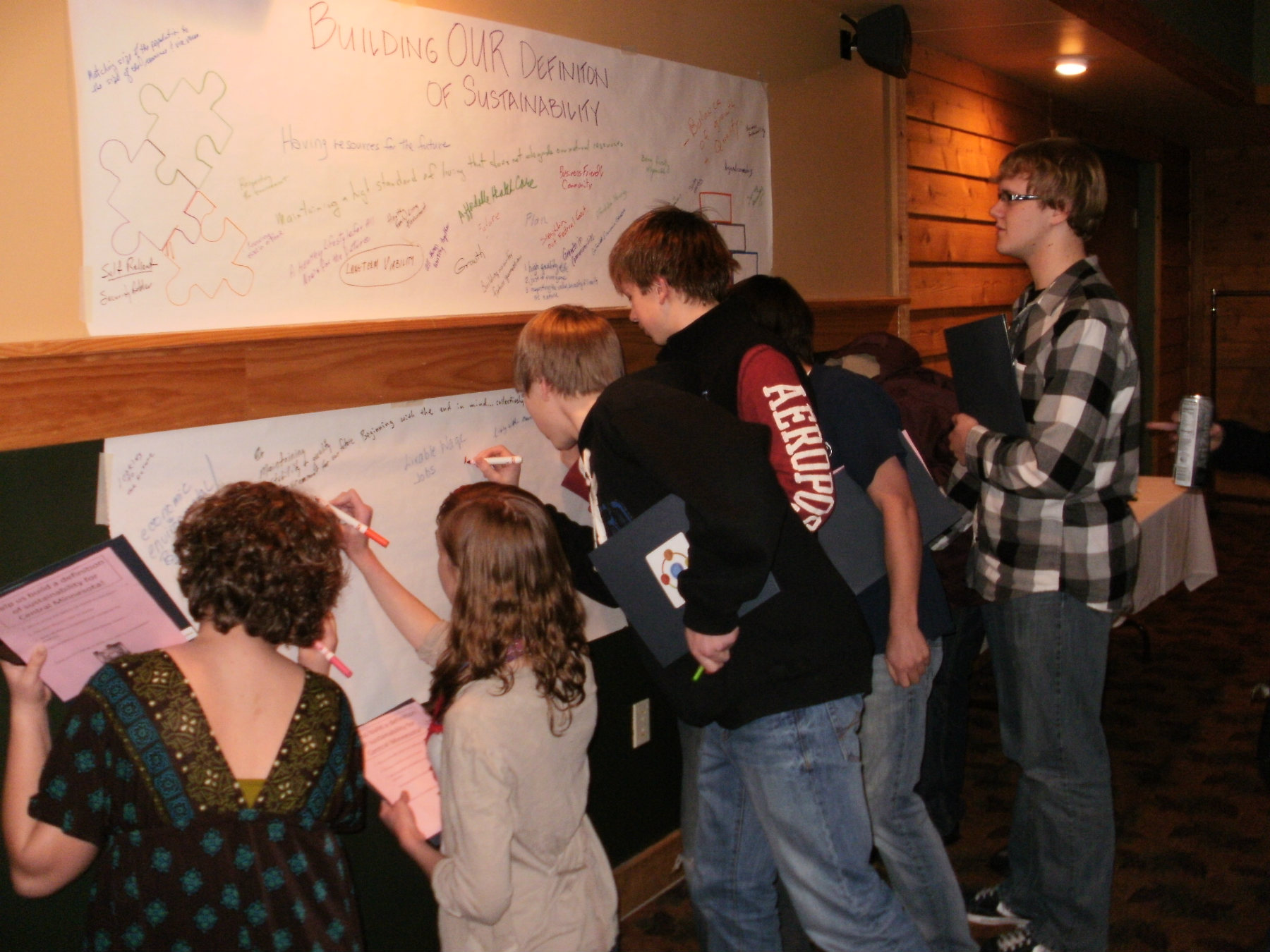
Gathered Ideas from The Region. Through a multi-sector inclusive process, we used consortium agreements and a step-by-step process (which includes our agendas, PowerPoint presentations, and worksheets) to identify a regional profile, needs, issues, and scenarios. We used evaluation to keep track of our progress and accomplishments for all 26 activities and engagement targets. (see Project Update for the most recent report to HUD).
 Step-by-Step ... Our Kick Off Event was held February 23, 2011. Activities were designed to begin to obtain input from the region, to begin to define "sustainability" and to establish norms for positive dialogue. During Work Group 1, March 2, 2011, we reviewed data provided by MN DEED and began to identify regional assets and issues. Work Group 2, April 19, 2011, focused on key issues and identifying data needed to better understand these. On May 24, 2011, during Work Group 3, we began to explore scenarios for the future as well as identify recommendations to address the key issues. Work Group 4, August 23, 2011, was a time when we reviewed draft scenario descriptions and continued to refine recommendations. During Work Group 5, September 20, 2011, the members of the Land Use, Economic Development, Transportation, and Housing looked for common themes.
Step-by-Step ... Our Kick Off Event was held February 23, 2011. Activities were designed to begin to obtain input from the region, to begin to define "sustainability" and to establish norms for positive dialogue. During Work Group 1, March 2, 2011, we reviewed data provided by MN DEED and began to identify regional assets and issues. Work Group 2, April 19, 2011, focused on key issues and identifying data needed to better understand these. On May 24, 2011, during Work Group 3, we began to explore scenarios for the future as well as identify recommendations to address the key issues. Work Group 4, August 23, 2011, was a time when we reviewed draft scenario descriptions and continued to refine recommendations. During Work Group 5, September 20, 2011, the members of the Land Use, Economic Development, Transportation, and Housing looked for common themes.
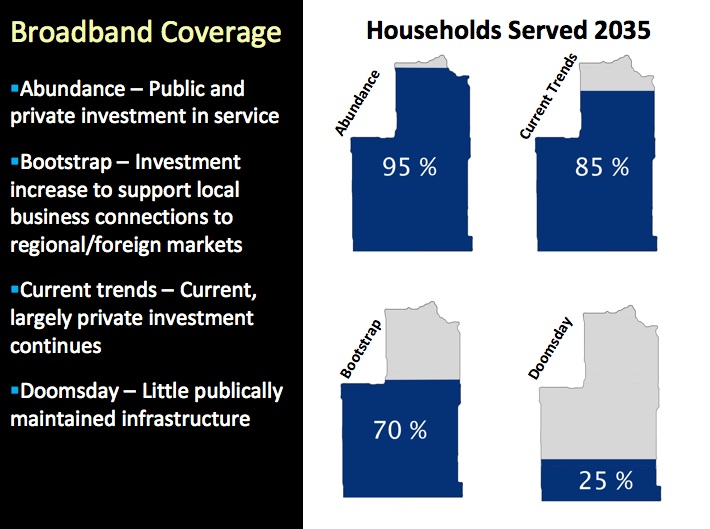 December 15, 2011, Round 1 was when the full consortium reviewed secnario data (such as for broadband) and voted on the preferred scenario for each issue area. Round 2, May 8, 2012, provided consortium members with an opportunity to review draft materials. Round 3, June 12, 2012, allowe
December 15, 2011, Round 1 was when the full consortium reviewed secnario data (such as for broadband) and voted on the preferred scenario for each issue area. Round 2, May 8, 2012, provided consortium members with an opportunity to review draft materials. Round 3, June 12, 2012, allowe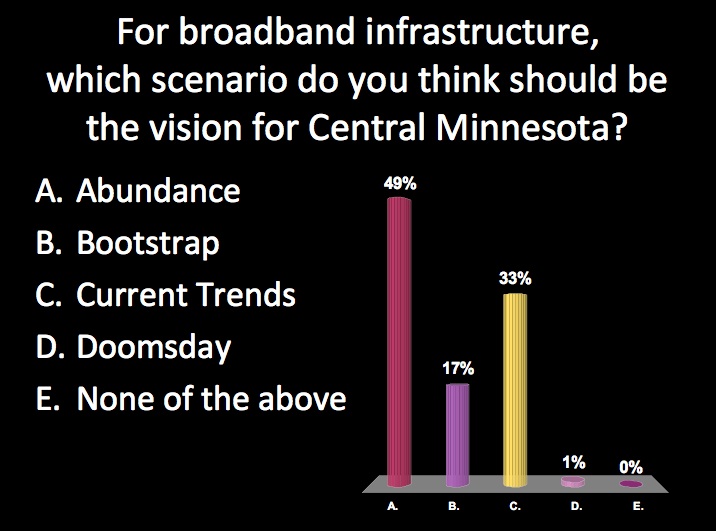 d consortium members to see how the core team used their feedback, review the draft policy toolkit, and begin to identify regional champions for the plan. On August 14, 2012, Round 4, we celebrated our accomplishments - not only production of a plan - but also the leveraging of more than $4 Million, at that time, for implementation projects.
d consortium members to see how the core team used their feedback, review the draft policy toolkit, and begin to identify regional champions for the plan. On August 14, 2012, Round 4, we celebrated our accomplishments - not only production of a plan - but also the leveraging of more than $4 Million, at that time, for implementation projects.
We also hosted other events such as the Resilient Region Workshops, Collage of Sustainability, GreenStep Cities Workshops, and a Utility Habitat and HRA Meeting to update the region regarding the work and to gather ideas for the final plan. Other opportunities for input included presentations at the MN Department of Transportations Standing Committee to Advance Modal Planning Integration (SCAMPI) SCAMPI meeting and the Regional Housing Dialogues.
We used multiple forms of communication to keep gather ideas for the final plan and to keep all engaged: through personal contact at standing meetings such as ; Flyers; e-mail; letters; press releases; radio spots; testimonials; and, the use of BaseCamp, Minnesota Public Radio’s Ground Level and Bush Foundation’s InCommons. Although we identified and recognized the needs and issues, we always worked to build on our strengths and assets – thereby being more of an “asset” based rather than a “needs” based approach
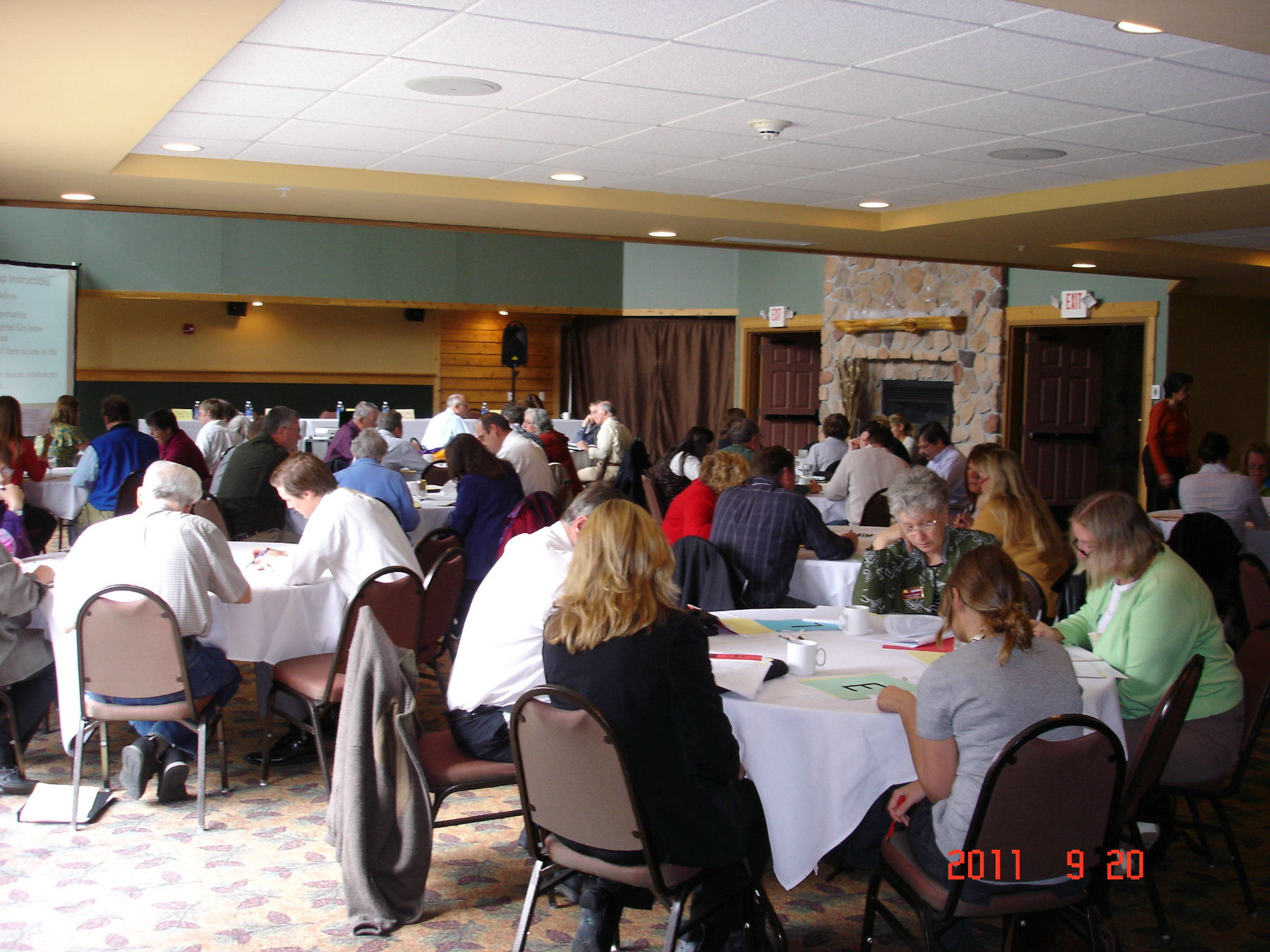 Resilient Region PlanWe used the information from the step-by-step process and 26 activities to develop The Resilient Region Plan. It includes the Community-Driven, University-Assisted, Team; Mission; HUD/DOT/EPA Livability Principles; Region’s Guiding Principles; Vision & Values; Regional profile; Themes, Goals, Recommendations & Action Steps (cross-referenced with HUD/DOT/EPA Livability Principles and Region’s Guiding Principles); Resilient Region Implementation Structure; Resources Leveraged for Implementation; and Evaluation Indicators of Success & Tools.
Resilient Region PlanWe used the information from the step-by-step process and 26 activities to develop The Resilient Region Plan. It includes the Community-Driven, University-Assisted, Team; Mission; HUD/DOT/EPA Livability Principles; Region’s Guiding Principles; Vision & Values; Regional profile; Themes, Goals, Recommendations & Action Steps (cross-referenced with HUD/DOT/EPA Livability Principles and Region’s Guiding Principles); Resilient Region Implementation Structure; Resources Leveraged for Implementation; and Evaluation Indicators of Success & Tools.
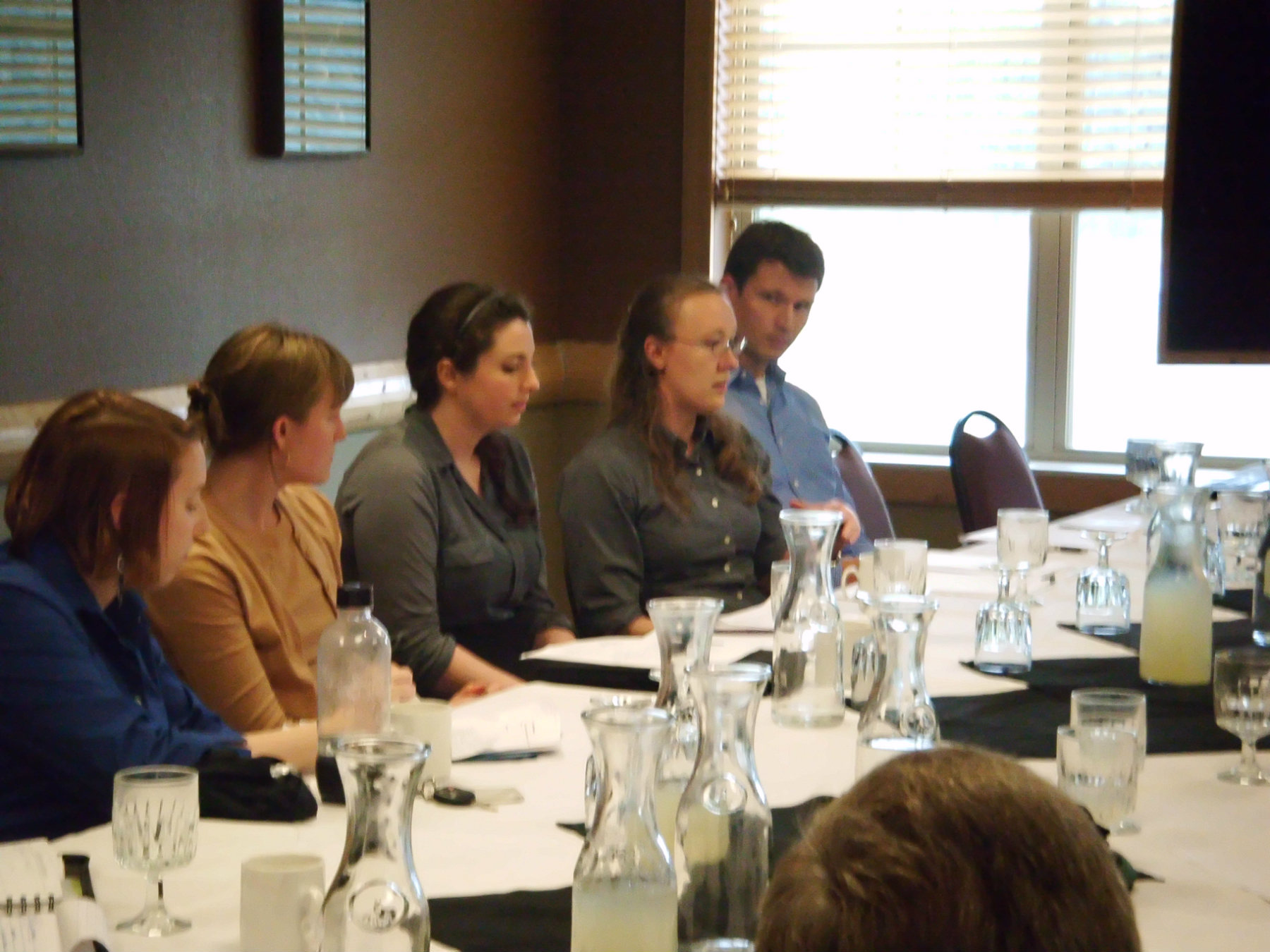
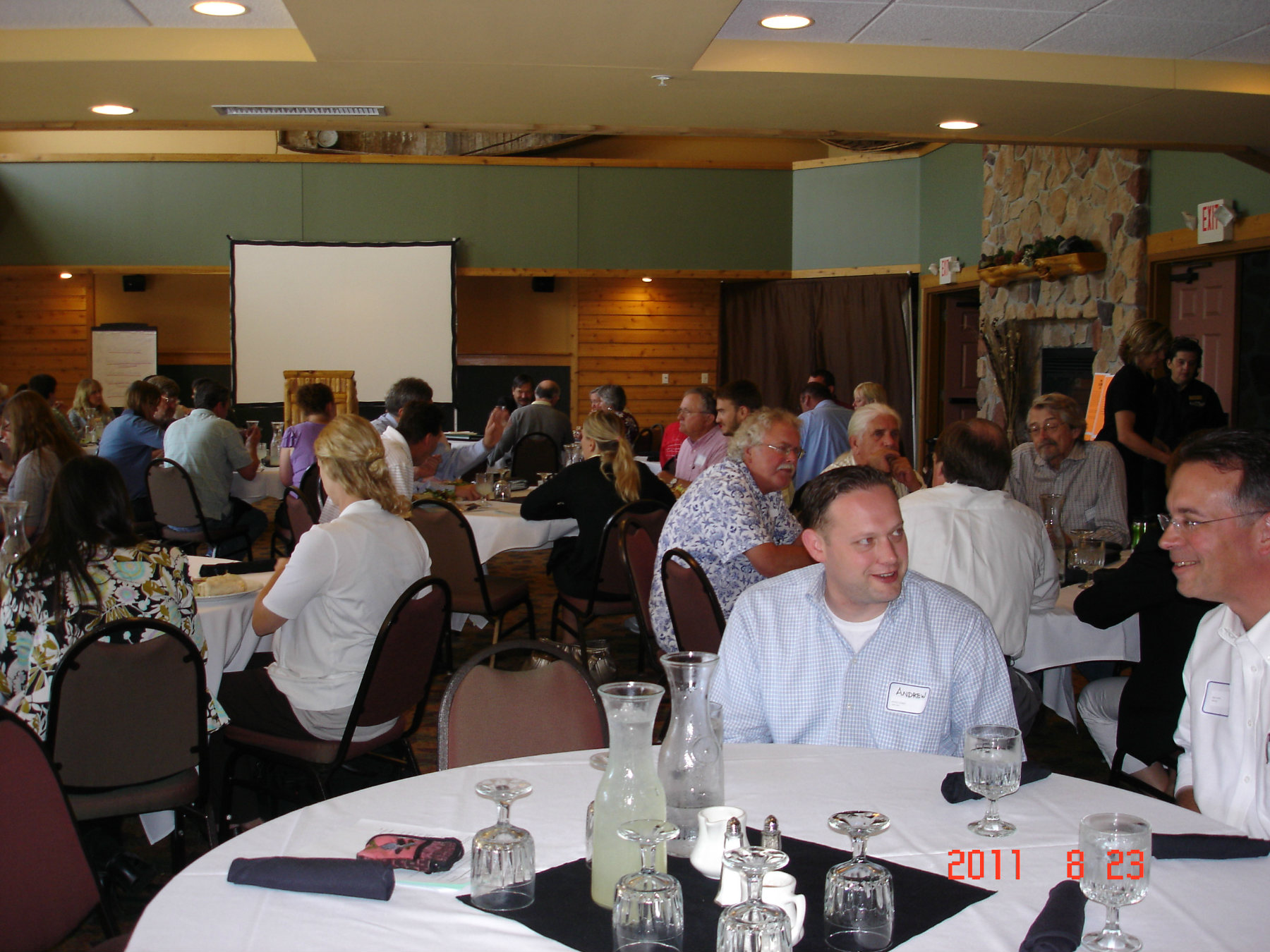 Housing resource documents prepared to support the plan, which may be found on the housing page, include: the Fair Housing Equity Assessment - FHEA, Affordable Housing Location Model, Affordable Housing Ordinances, Regional Housing Dialogues.
Housing resource documents prepared to support the plan, which may be found on the housing page, include: the Fair Housing Equity Assessment - FHEA, Affordable Housing Location Model, Affordable Housing Ordinances, Regional Housing Dialogues.
Land Use resources include: Review of Natural Resource Ordinances, Regional Land Use Practicies: How Can Central Minnesota Become More Sustainable, City Land Use Policy Analysis, County Land Use Policy Analysis, and a Zoning Typology Memo prepared for the Land Use Work Group.
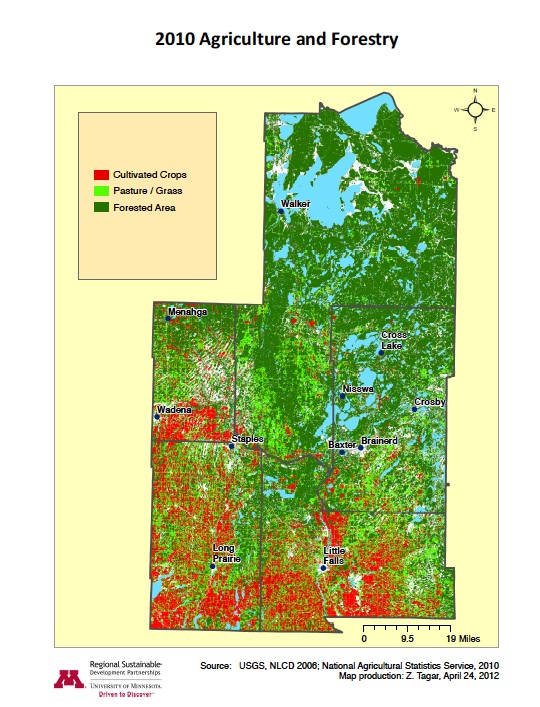 On the Economic Development page you will find a number of resources including the CEDS, Hazard Mitigation Plans, 2011 Vital Projects, iplaces, RREAL Solar Thermal Feasibility Study and work to support the five-county Fire Districts.
On the Economic Development page you will find a number of resources including the CEDS, Hazard Mitigation Plans, 2011 Vital Projects, iplaces, RREAL Solar Thermal Feasibility Study and work to support the five-county Fire Districts.
The Transportation page includes more detailed information: A Transportation Inventory and Needs; Transportation Maps and Commute Sheds, County Transportation Projects, City Policy Transportation Analysis, County Policy Transportation Analysis and a Transportation Funding Analysis.
The Map Narratives provide an analysis of the maps used to study the housing, transportation, economic development land use disciplines. These cover such topics as population density, impaired lakes and streams, aquatic invasive species, and education.
Accomplishments to Date
We have leveraged additional resources, already taken steps to become a more resilient region, and engaged more than 600 individuals (unduplicated) from public, private, nonprofit, and philanthropic sectors.
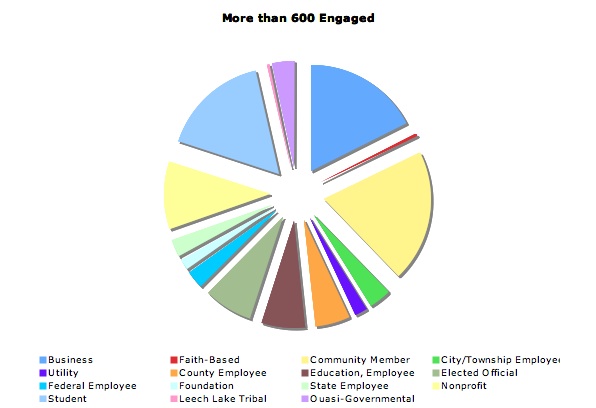 Broad Cross-Sector Engagement. We proposed to engage 200 individuals in the work. As of August 14, 2012, our final celebration, we have engage more than 600 (unduplicated). We have exceeded our targets in all areas: Students, low Income, communities of color, and across the five-county region. They come from all sectors: 17% business, <1% Faith-Based, 20% Community Members, 3% City/Township Employees, 2% Regional Utilities, 5% County Employees, 7% Education, 8% Elected Officials, 3% Federal Employees, 2% Foundations, 3% State Employees, 10% Non-profits, 16% Students, <1% Leech Lake Tribal, and 3% Quasi-government (e.g. HRAs and REDCs. The 610 community members contributed an additional $149,654 (610 members, 6,868 hours, @ $21.79 per hour).
Broad Cross-Sector Engagement. We proposed to engage 200 individuals in the work. As of August 14, 2012, our final celebration, we have engage more than 600 (unduplicated). We have exceeded our targets in all areas: Students, low Income, communities of color, and across the five-county region. They come from all sectors: 17% business, <1% Faith-Based, 20% Community Members, 3% City/Township Employees, 2% Regional Utilities, 5% County Employees, 7% Education, 8% Elected Officials, 3% Federal Employees, 2% Foundations, 3% State Employees, 10% Non-profits, 16% Students, <1% Leech Lake Tribal, and 3% Quasi-government (e.g. HRAs and REDCs. The 610 community members contributed an additional $149,654 (610 members, 6,868 hours, @ $21.79 per hour).
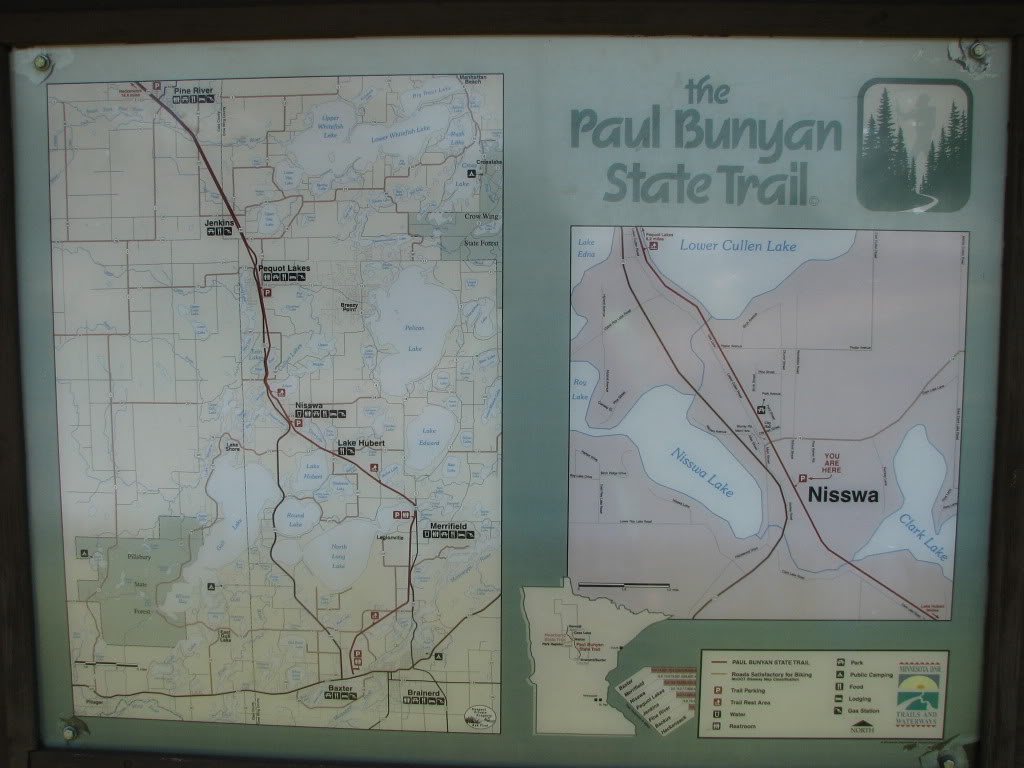
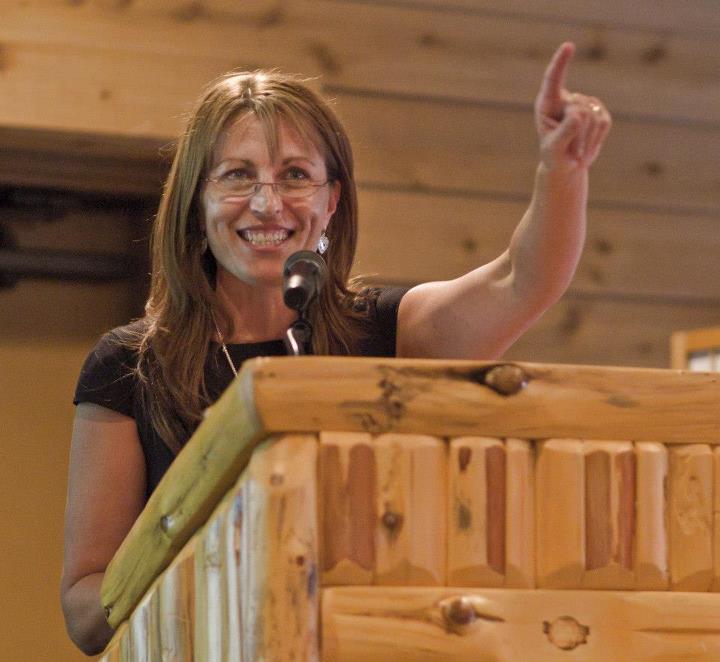 Outreach. During the past two years we have made numerous presentations to disseminate our work and what we have learned. These included: NWAF Presentation conference on poverty; 2012 Small Town Symposium Community-driven, University-assisted, Partnership: Working Together to Build Sustainable Communities; and the Region V OSHC Grantee Symposium . We also were invited to provide input to our federal government regarding rural issues at the White House Forum on Regional Innovation in Rural America. We will be visiting communities throughout the region to talk about the plan, Green Step Cities, DNR Shoreland Standards, iplaces software, the Conservation Design Score Card and Next Steps.
Outreach. During the past two years we have made numerous presentations to disseminate our work and what we have learned. These included: NWAF Presentation conference on poverty; 2012 Small Town Symposium Community-driven, University-assisted, Partnership: Working Together to Build Sustainable Communities; and the Region V OSHC Grantee Symposium . We also were invited to provide input to our federal government regarding rural issues at the White House Forum on Regional Innovation in Rural America. We will be visiting communities throughout the region to talk about the plan, Green Step Cities, DNR Shoreland Standards, iplaces software, the Conservation Design Score Card and Next Steps.
Lessons Learned
We understood that our region would not tolerate a waste of precious government resources on “just another planning effort.” We needed to implement as we planned.
| We Learned ... | |
|---|---|
|
|
Step by Step documents take you through our process from the beginning (Fall 2010) to our celebration event in August 2012.
| Step By Step | |
|---|---|
| Core Events | Events for Updates & Ideas |
Regional Profile compiled by Nate Dorr, Analyst for the Minnesota Department of Employment and Economic Development, for Work Group 1.
William Mitchell College of Law Research Projects
Ways to Become Engaged or Learn More
Become Involved in Our Work! There are a number of ways you can become involved – as Champions or as a resource. Contact us for more information!
